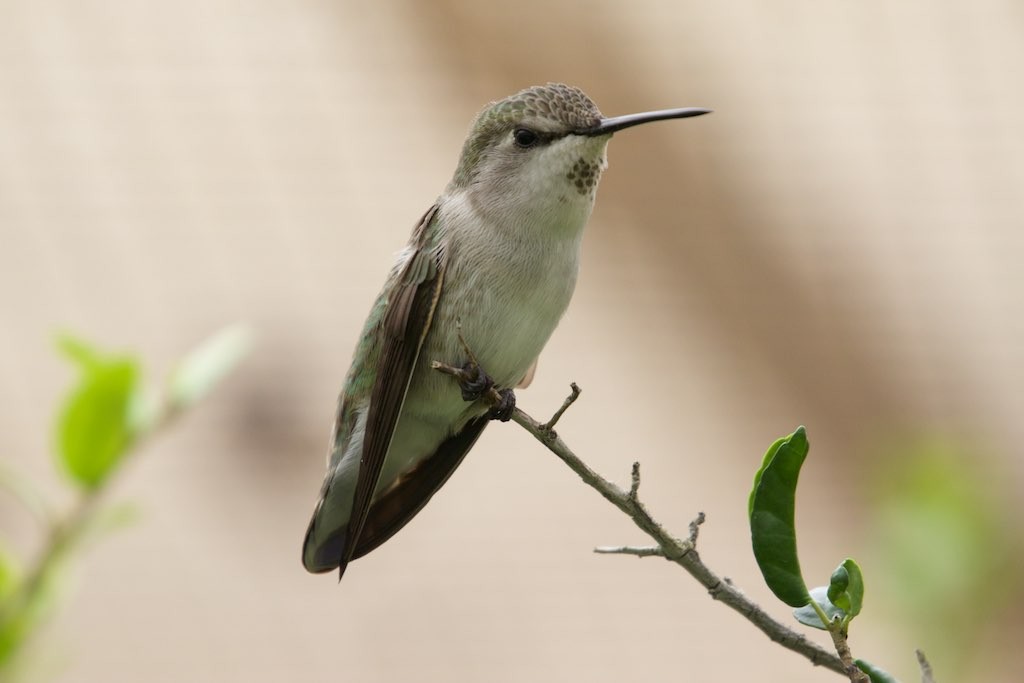Costa's Hummingbird
A species of Capped Hummingbirds Scientific name : Calypte costae Genus : Capped Hummingbirds
Costa's Hummingbird, A species of Capped Hummingbirds
Botanical name: Calypte costae
Genus: Capped Hummingbirds
Content
Description People often ask General Info
Description
The male Costa's has a mainly green back and flanks, a small black tail and wings, and patches of white below their gorgeted throat and tail. Its most distinguishing feature is its vibrant purple cap and throat with the throat feathers flaring out and back behind its head. The female Costa's hummingbird is not as distinct as the male, having grayish-green above with a white underbelly. 
Size
9 cm
Life Expectancy
6 years
Nest Placement
Shrub
Incubation Period
1 - 2 broods
Number of Broods
15 - 18 days
Nestling Period
20 - 30 days
Feeding Habits
Costa's Hummingbird primarily subsists on nectar from over 22 plant species, including chuparosa and ocotillo in the Sonoran Desert, and sages, tree tobacco, penstemon, and monkeyflower in California. They also consume small flying insects found within flower petals.
Habitat
Costa's Hummingbird is commonly found in arid habitats like deserts, washes, and scrublands. Preferring low to moderate altitudes, they inhabit regions typically below 4,000 feet, such as the Sonoran and Mojave Deserts and coastal California chaparral. The bird favors areas rich in vegetation including palo verde, jojoba, desert lavender, saguaro, and various cacti. In the Mojave, costa's Hummingbird is drawn to springs and streams bordered by cottonwoods and saltbush, while in Baja California, they utilize desert scrub and forests with native cacti and trees.
Nest Behavior
Female costa's Hummingbirds invest 4-5 days in nest construction, sometimes layering new ones atop old. Egg laying and parental roles are solely the female’s responsibility, as part of their solitary nesting behavior.
Nest Characteristics
The nests of costa's Hummingbird are found 3-7 feet off the ground in shrubs like palo verde and ironwood. Made of bark strips, leaves, lichen, and flower down woven with spiderweb, these cup-shaped nests are flimsy, measuring 1.25 inches across and 1 inch deep.
Dite type
Nectivorous
People often ask
General Info
Feeding Habits
Bird food type
Bird Feeder Type

Nectar Feeder
Sounds
Song
Recording location: United States
Behavior
Costa's Hummingbird are active avians that exhibit distinct territorial and mating behaviors. During breeding season, males establish and defend territories from elevated perches in their chosen habitat, using a high-pitched whistle as a signal of ownership. They engage in impressive looping dive displays as both a courtship ritual for attracting mates and a warning to deter rivals. Despite their territorial nature, they show relatively less aggression and defer to larger hummingbird species when defending nectar sources. Outside of breeding times, costa's Hummingbird migrates in search of abundant flowers, displaying a level of adaptability by moving to new areas to exploit food resources. They do not provide parental care beyond mating, with females shouldering the responsibility of nurturing the young.
Distribution Area
Costa's hummingbird is fairly common in the arid brushy deserts and any nearby gardens of the Southwestern United States and the Baja California Peninsula of Mexico. 
Species Status
The IUCN describes them as of least concern. The population is stable and there are no known threats. They are found in at least one protected area. 
Scientific Classification
Phylum
Chordates Class
Birds Order
Swifts and hummingbirds Family
Hummingbirds Genus
Capped Hummingbirds Species
Costa's Hummingbird 